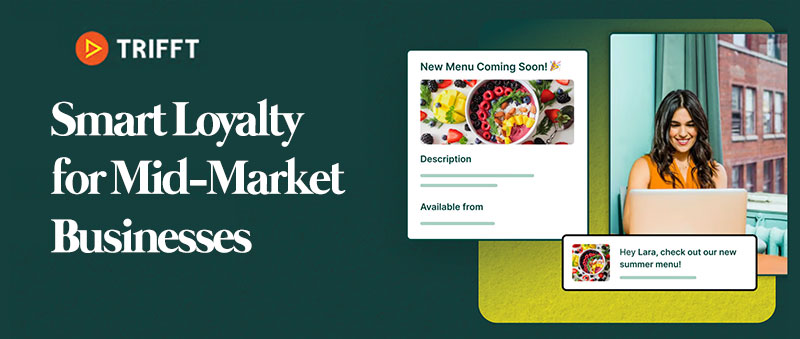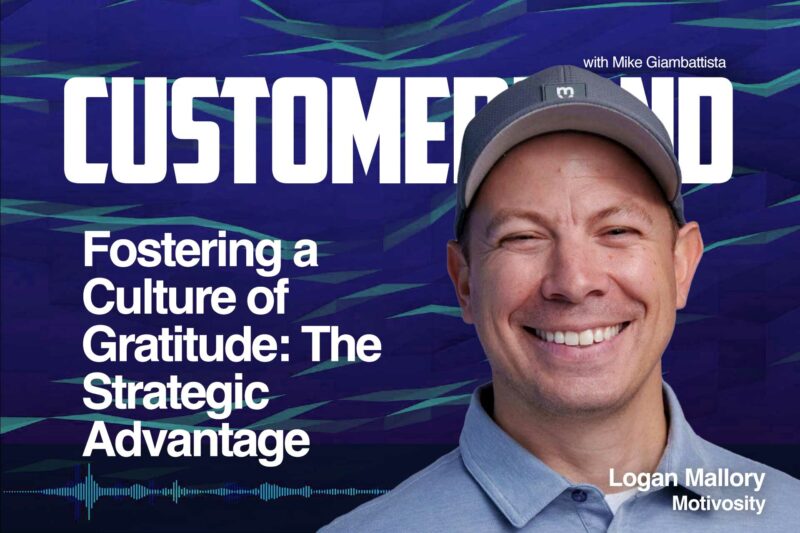Why the focus right now on employee experience? Why should a company, right now of all times, be looking over in this direction?
Join us for an insightful discussion with Logan Mallory from Motivosity, as we explore the impact of employee recognition on workplace dynamics. Logan shares practical approaches used at Motivosity to promote peer appreciation and authenticity, fostering a positive workplace culture. We also discuss the concept of microcultures within organizations and their role in combating workplace loneliness.
Discover why acknowledging your team goes beyond surface-level benefits, especially in challenging times like the COVID-19 pandemic. Companies that prioritize recognition, like Motivosity, not only maintain team morale but also improve mental health and productivity.
Whether you’re an HR professional seeking new strategies for engaging your workforce or simply interested in fostering gratitude and genuine connections in your workplace, this episode offers actionable insights. Logan Mallory demonstrates how gratitude isn’t just a nicety but a strategic necessity, providing tangible tactics for transforming company culture.
This episode of Customerland is sponsored by

Read the complete transcript below
Logan Mallory
But the reality is is when people feel recognized, they stay longer, work harder and they collaborate better with their team members. There’s a power in recognition that goes a long way.
Mike Giambattista
Today I’m with Logan Mallory, who’s vice president of marketing at Motivosity. Logan, thanks a million for joining me. I really appreciate it.
Logan Mallory
Yeah, Mike, I’m glad to be here and excited to hang out with your audience for a little bit today.
Mike Giambattista
So maybe you could tell us a little bit about what Motivosity is and does your kind of role in that bigger market space and then, if you would, your role within Motivosity.
Logan Mallory
Yeah, absolutely so. Motivosity is an employee experience platform and, at the end of the day, what we help companies do is create winning cultures right. Winning cultures can mean a lot of different things to different people or different employers, but very often, at the heart of that is two things. The first one is people feel recognized and appreciated for the work they’re doing. They feel like they’re adding value and that value is being seen. And then the second item is they feel connected to the people they’re working with. There’s some really fascinating data and efforts right now and you might want to come back to this later in the episode, but the US Surgeon General is talking about the epidemic of loneliness, and work has a piece to play in that right.
Mike Giambattista
It sure does.
Logan Mallory
People we work with, and Motivosity helps build that community and that connection.
Mike Giambattista
Can you talk a little bit about how you know what is the method, what’s the? You can’t say secret sauce, because there isn’t one, but how does Motivosity go about doing such a thing?
Logan Mallory
Yeah, there’s lots of different answers to that. The first one is when it comes to recognition and gratitude is a really important part of positive mental health and being engaged right, and so a lot of companies, especially traditionally take a top down approach to recognition that the executives, the leaders, have all the power. They pick the MVP each quarter, which leaves the other 99 employees not feeling appreciated right, and so we have. We have really built ourselves around peer to peer, and we do that by recruiting every team member to participate in recognition and we empower them to say thank you or nice job to the people that they’re working with.
The other thing that I would highlight is we’ve got to be able to bring our whole selves to work, not just the professional part and Motivosity creates. You know, communities and places. You might call them an employee resource group, but instead of thinking of that as a formal employee resource group, think of it around interests or commonalities or hobbies that people love, and when those less formal resource groups exist, it gives people a place to bring their like how they really are, not just how they fulfill their job to work, and that part of connection at the office is really important. Again, I mentioned the US Surgeon General currently that’s Vivek Murthy and Vivek talks about in his administration. He talks about how employers should empower people to connect outside of work. That doesn’t mean force them, but they should empower them if that desire is there, and I think that’s one of the things Motivosity has tried to do in our platform.
Mike Giambattista
Can you talk a little bit about and forgive me if I’m going too deep into the weeds here but does that look like a forum? Does it look like Slack channels? What is community? What are those ERGs we won’t use the word, but those little mini communities, what does that look like within Motivosity?
Logan Mallory
Yeah, it looks. It presents itself in a couple of ways. One, there are literally we call them interest groups, and so it’s just a way to express what you’re interested in, whether that’s you’re a foodie, whether that’s you love movies. One of our customers actually had. They had about 800 employees, so a good sized organization, and in that company there were a lot of people that loved road biking, right, and so you had people from finance and marketing and sales. People who otherwise wouldn’t have interacted very often found each other in these little resource groups, these little communities in Motivosity. They started biking and the organization loved that micro culture, right.
And so some companies might say, hey, do that, do your thing after work, don’t bother us with the road biking. This specific customer said we love that micro culture because it’s building friendships, it’s reducing silos, people are happier at work, and so they ended up providing resources for that employee, that interest group, right, they paid for the kits, for the jerseys, they would sponsor bike races every once in a while, and so certainly micro communities is one of those. The other part is just communication, right, Like within Motivosity, and we do this all the time. We have about 70 employees. Every weekend or every couple of days, you’ll see one of our team members say, hey, I went and did this with my family. Here’s a picture of me and my wife, or my husband and my kids. Or hey, we just had our baby. Here’s this baby. Or hey, I ran into this person in an airport wearing a Motivosity shirt. And so they add highlights, and those highlights aren’t always professional and that helps people see throughout the company what’s going on with their coworkers outside of just work.
Mike Giambattista
So you mentioned this term. I’m loving it the micro culture, but it speaks to kind of a broader culture within a company that embraces this kind of thinking, which I would say is fairly non-traditional right.
Logan Mallory
Very much so.
Mike Giambattista
So there are companies that have kind of sprung up around more progressive thinking around their employees, and then there are a whole lot of companies out there that are, as you mentioned, just top down, so in a more top down traditional and we don’t want to paint anybody in a bad way here but how does Motivosity go in and start? Is it just a matter of explaining the benefits of this kind of approach, or are you really looking for companies that are already thinking that way?
Logan Mallory
A little bit of both. A little bit of both meaning. Of course, our ideal customer profile is someone who’s thinking about how do I do things different, how do I shake this up, how do I make this authentic and a sincere culture, and those are the prospects and the companies that are naturally drawn towards us. And sometimes we do go in and we disrupt a culture, and I think that you can… let’s see, probably the best way that we do that is simply with taking one part of the problem right, like whether that’s you support the micro communities, or you allow the peer to peer recognition, or you start doing some fun achievements and incentivizing your achievements, whether it’s a book club or a wellness program, like those small steps and how you communicate those to your employees. It’s a little bit of a gateway drug, right? You start to see the success and then you get a program that works, that your employees care about, and then you start to think oh wait, this worked better than I thought. What else could we do with this?
There’s this really interesting concept that I talk about a lot. It’s called the iceberg of ignorance and it’s typically looked at through a little bit of a negative lens, and the concept is, the higher you are within an organization, the less you know about what’s going on at the bottom of the iceberg right the drama, the problems, the softwares that don’t work and executives that start to realize that maybe they don’t have the full picture. That is kind of it opens them up and says, wow, what else do I not know that I could rethink from this traditional problem?
Trifft is Smart Loyalty

As of today there are 1237 technologies on G2 listed as Loyalty platforms. There are 560 loyalty technologies on Capterra. My question is – how do you navigate all that? The answer – if you’re an enterprise-level user – is that there are a handful of organizations out there that are happy to help you figure that out. But if you’re a mid-market user … well, good luck.
There’s a massive pool of options, features, integrations, stack-dependencies and complications – an almost innumerable amount of stuff to sort through just to arrive at some sort of short list.
That was the thinking behind Trifft. Trifft – T R I F F T is a smart loyalty platform designed from the ground up to provide mid-market retail and restaurant operators with a full-featured yet easy to use loyalty solution.
It was built by a team of loyalty veterans who saw that while platform sales were going up, usage and adoption were stagnant because the technologies were: too complicated, had too many features, needed too much manpower, required too much IT input, etc., etc., etc.
Trifft’s entire reason for being is to help mid-market businesses deliver on their complex loyalty strategies without the tech bloat that so often accompanies such things.
That’s Trifft. Smart Loyalty. Trifft. T R I F F T. I O
Mike Giambattista
I’m thinking a little bit about some of the conversation we had before. We were officially in conversation here. But employee experience has meant little things along the way to a lot of customer experience, people who recognize that a great customer experience kind of relies on a great employee experience, that you can’t have one without the other. But that, I think, became an imperative during COVID. I mean, as you mentioned, there were a lot of aha moments for companies where they hadn’t really focused on the employee experience and all of a sudden found themselves in a pinch during COVID and immediately after where they really had to rethink their approach entirely. So I’m curious as to what you saw during and post COVID. Has there been kind of a new I even hate this word era of enlightenment, sure, or is it kind of like this is just what’s prescribed right now and we have to begrudgingly kind of go do this?
Logan Mallory
You know, we did a survey not too long ago with about a thousand I believe it was a thousand HR practitioners and we said what are you doing as far as culture, what are you doing when it comes to recognition? And 60% of them said kind of nothing like a homegrown system. You know, gift cards in a drawer and we thought that was really interesting that such a large part of that audience was, you know, it was a little bit of an afterthought. As far as COVID, we had some Motivosity, had some really powerful retention numbers during COVID. In fact, our net retention was above 100% because companies felt like they couldn’t get rid of the tool that they were using to keep their people happy.
This is a kind of a fascinating story. We have one of our team members here. He worked for one of our customers and this customer the business was struggling, they, their, their viability was tough at the time and he was in a meeting with the executive team as they were looking at the softwares and technologies and saying, hey, what do we cut, what do we get rid of to help the business float for a while. And Motivosity apparently came up on the list as, as you know, what do we do with Motivosity and the executive team says said we literally can’t get rid of that. That is what is keeping our team members going and Wow.
That’s quite a statement yeah, it’s, it’s huge. And again, I think you could say that about other tools as well that focus on building great cultures or in a cornerstone of your culture. But to me, that is a shift in the mindset right. We have to keep the things that keep our employees happy, because our team members are the ones that are keeping this working, and as soon as they shut down, so does the org, and I thought that was a pretty powerful experience.
Mike Giambattista
Yeah, yeah, that’s a big deal. Nobody had to sell it to the C-suite. They kind of recognized that, you know, maybe just because they needed to at the time. Yeah, I think I know the answer to this next question, but I’m going to put it out there anyway, which is are there any verticals or industries where Motivosity plays particularly well, rather than others?
Logan Mallory
Yeah, Absolutely, Absolutely. We play really well in the SaaS industry right Technology companies that are thinking about this actively Now. They’ve had a tough year in tech.
Mike Giambattista
Oh yeah.
Logan Mallory
In 2023. We anything, then this goes right to your audience. When you have customer facing employees, you want them to be as happy as possible and to be recognized for their wins and recognized when they do the right thing for the customer, and so we do really well in those industries and in those verticals. So there’s a few that’s a little harder for us. You know government doesn’t love empowering individuals to give out dollars as micro recognition, so that one might not be super easy for us.
Mike Giambattista
Plus, they don’t really known for change.
Logan Mallory
Yeah, exactly, exactly. We’ve got a really beautiful mobile app, but oftentimes if you have a technology, a technology resistant group, that might cause some issues with us. Our technology is very easy. It feels like social media. So if you can use Facebook, you can use Motivosity, but some organizations aren’t there yet.
Mike Giambattista
I want to dog-leg our conversation. Just a hair here.
Logan Mallory
I’m ready for you. Throw me the curtain ball.
Mike Giambattista
Okay, that’s actually pretty easy, but I think it would be really helpful to maybe take a couple of steps back from the how and the what conversations into the why, the why of EX, because I’m sure there are people listening and reading this who know what employee experience is. Probably no, in some reference way. It’s value, but maybe you could just give us a primer on why the focus right now on employee experience, recognizing that you come from a world that’s entirely focused on employee experience. But why should a company, right now of all times, be looking over in this direction?
Logan Mallory
Yeah, maybe I can share a little bit of our origin story. Our founder is a gentleman named Scott Johnson. Scott started a company in about 2019-99 that was eventually sold to Adobe Partway, probably about 10 years ago. Scott was the CEO of that company and then stepped away and was on the board of directors. When he was on the board of directors, people eventually felt a little bit more comfortable with him and giving some candid feedback.
People started coming to Scott and saying this place doesn’t feel like what it used to. I feel like a cog in a machine. I’m not sure I’m going to stick around much longer. Scott was I don’t know if the right word is frustrated or disappointed, but he was something because they had tried to do all of the things you were supposed to. They had the good health insurance, they had the snack room, they had the food truck parties. They did all the right things. Scott said I’m going to fix this with technology.
He really did a lot of research on positive psychology and Maslow’s hierarchy of needs and Herzberg’s two-factor theory and realized that the motivation factor of being recognized and appreciated truly changed not only people but the environment and the culture of the workplace. That is a huge thing we’re going through. We have mental health struggles more than we ever had Motivosity we did a survey of 2,000 people not too long ago. 75 percent said their mental health would improve if they were recognized at work more often. I think that organizations are really facing this interesting crossfire. Suddenly, more than ever, employees are asking for the employer to help them with their mental health. They’re expecting more out of the executive team. They’re expecting more resources and investment. We can try to fix that problem with swag and snacks. We can try to fix that with more PTO. But the reality is, when people feel recognized, they stay longer, work harder and they collaborate better with their team members. There’s a power in recognition that goes a long way.
Mike Giambattista
Would you say that that recognition would be the core tenet to why Motivosity exists? We’ve spoken about community, but your identity within that community is a form of recognition. Outside of that, you’ve mentioned micro-rewards and other ways to actually recognize and maybe even incentivize people. How central is that idea to what Motivosity is all about?
Logan Mallory
It’s so important. For a long time it’s been the foundation of our business. We’ve expanded because we’ve realized the importance. What I would say is that community and gratitude are this really nice virtuous cycle, meaning when you recognize your peer, when you say, hey, thanks for picking up that shift for me so that I could go to my kid’s basketball game. Or when you say thanks for working on that report, it was awesome, then you start to build a relationship. When you have relationships, when you have positive community, you like spending time together, even if that’s just at work, you enjoy being together and you’re more likely to recognize people you like. I’d say that community and gratitude create a really nice virtuous cycle together.
Mike Giambattista
Who, would you say, within an organization, would be your primary, your primary clients, but maybe even your primary points of contact? Would it be the HR department? Would it be the customer experience people who are responsible for the front lines and customer service? Who, would you say, is probably most able to get what you’re doing and have a light bulb go off to the point where they go? Hey, we have to talk.
Logan Mallory
Yeah, the executives, the CEO. When the CEO realizes, when you have good leaders that want to make their cultures even better, right, that want to go from good to great, those leaders are just the light bulb clicks, they get it and they move really quickly and see the benefits. Oftentimes HR is the one actively trying to solve this problem. Right, and they’re trying to solve it through a rewards lens. That’s where we just naturally start like let’s give people more stuff. Right, and I don’t get me wrong, I love my Motivosity hat. I wear it almost all the time, but it doesn’t get me out of bed on Monday mornings and it doesn’t make me a better team member. Right, like giving people stuff kind of. It doesn’t have a very long shelf life, and so that’s why leaders and HR teams need to focus on how do we create a powerful culture and mindset and attitude amongst our team members, not just try to buy their happiness.
Mike Giambattista
If there were no. I’m going to rephrase this because there is a way. What would you say to the HR folks that are recognizing who are really tasked with employee retention and recruitment in a really interesting environment right now? What would you say to those folks about maybe not about what Motivosity does, necessarily, but how they need to be thinking at this point in this market space and in the short term?
Logan Mallory
I think one of the big mistakes that you can make in trying to sell this concept and again, motivosity Agnostic is to say I found a really great rewards tool, right. That’s not how executives are thinking. That’s not how your CFO, who’s going to write the check, is thinking. They’re thinking how do we retain our talent? How do we have to do? How do we keep our best talent longer? How do we get people to engage for 40 hours a week instead of checking out for 15? And so there’s some really interesting stats. One of them is from Harvard Business Review. There’s a stat from that group that says lonely employees is one of the top reasons for unwanted turnover and it costs US businesses $406 billion a year. Right, and so, like, when your employees are lonely and they don’t have friends at work, they don’t stick around, like they don’t have that stickiness factor.
We’ve done a lot of research with CEOs that are engaged in Motivosity and again, you could just use a synonym and say CEOs that are actively recognizing their people. Right, that is the core of what we do. Those CEOs, their ENPS, their employee net promoter scores, are four times higher than CEOs that don’t engage at that level, and then the result of that is that they have world-class turnover. So active CEOs that actively recognize their employees have experienced a turnover rates of 9.6%, and in the same time period 2022, the industry average was 22.4%. So if I was an HR or in customer experience and I was trying to sell this, I wouldn’t ever go say, hey, we can give our people more stuff and have really great rewards. I would say you know what, if we build a culture of gratitude within our organization, studies show that turnover rates more than drop in half compared to the industry average.













